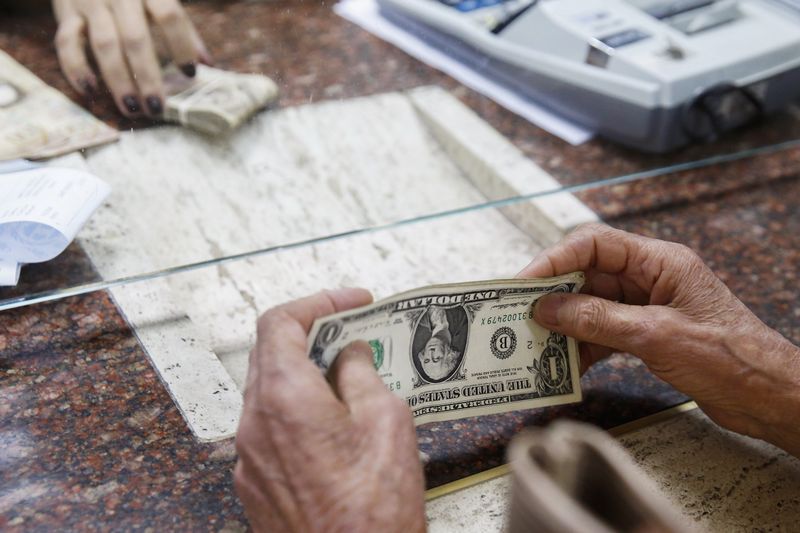Gold prices edge lower; heading for weekly losses ahead of U.S.-Russia talks
* Dollar rebounds after worst week since 2009
* Pandemic fears keep FX markets jittery
* Analysts say month-end flows may support dollar
* Offshore yuan weaker after China cuts interbank rate
* Graphic: World FX rates in 2019 http://tmsnrt.rs/2egbfVh
By Tommy Wilkes
LONDON, March 30 (Reuters) - The dollar snapped a week of
declines on Monday, rising against major currencies and riskier
emerging markets as investors braced for a prolonged period of
uncertainty while governments tightened lockdowns to fight the
coronavirus.
China's offshore yuan fell after the Chinese central bank
cut a key interbank interest rate.
The euro, sterling and Aussie dollar were all down between
0.5% and 1% in London trading, bringing an end to their recent
rebounds that followed the Federal Reserve's efforts to calm the
scramble for the U.S. currency earlier this month.
Concerns about the spreading coronavirus and the economic
impact of shutdowns continued to dominate foreign exchange
markets, but price moves on Monday were relatively
well-contained and much smaller than in recent sessions.
"I think you have to say that risk is still high," said Adam
Cole, a currencies strategist at RBC Capital Markets.
"The underlying newsflow out of China has been a lot better,
in Italy it has improved ... but that's not the case in the UK
and certainly not the case in the U.S."
He said markets needed to see "broader evidence of a peak in
infections" before calm returned and otherwise risked more
"brutal selloffs periodically".
The dollar index rose as much as 0.7% to 98.992 =USD .
Analysts said investors' end-of-month portfolio rebalancing
as well as nervousness about the virus was also supporting the
greenback.
The euro dropped 0.6% to $1.1077 EUR=EBS , while sterling
weakened as much as 1% to $1.2318 GBP=D3 before rebounding
somewhat.
Over the past two weeks the dollar first posted its biggest
weekly rise since the 2008 financial crisis and then its biggest
weekly drop since 2009. Signs of funding stress have eased but
not abated as hard cash remains in high demand.
"Risk aversion has been more important to the direction of
the dollar than traditional interest rate differentials,"
Standard Chartered analysts said in a note.
"For the dollar to surrender some of its recent gains,
investors would need to shift their preferences back to a
broader basket of safe-haven assets."
The safe-haven Japanese yen JPY=EBS was steady at 108.02
yen per dollar.
Both the dollar and yen rose against emerging market
currencies after a weekend which brought more bad news on the
virus front. EMRG/FRX
Total deaths are around 34,000 and the United States has
emerged as the latest epicentre, with more than 141,000
confirmed cases and 2,400 deaths. Anthony Fauci, director of the National Institute of Allergy
and Infectious Diseases, said the pandemic could ultimately kill
between 100,000 and 200,000 people in the United States, if
mitigation was not successful.
The dollar gained 0.3% versus the offshore Chinese yuan
CNH=EBS to 7.1082 after the People's Bank of China
unexpectedly cut a key interbank interest rate, the seven-day
reverse repurchase rate, by 20 basis points. The Australian dollar dropped sharply before recovering to
trade down 0.3% at $0.6148 AUD=D3 .
Elsewhere the oil-exposed Norwegian crown NOK=D3 fell
heavily along with declining oil prices and the South African
rand ZAR= crumbled to a record low after Moody's cut South
Africa's credit rating.
